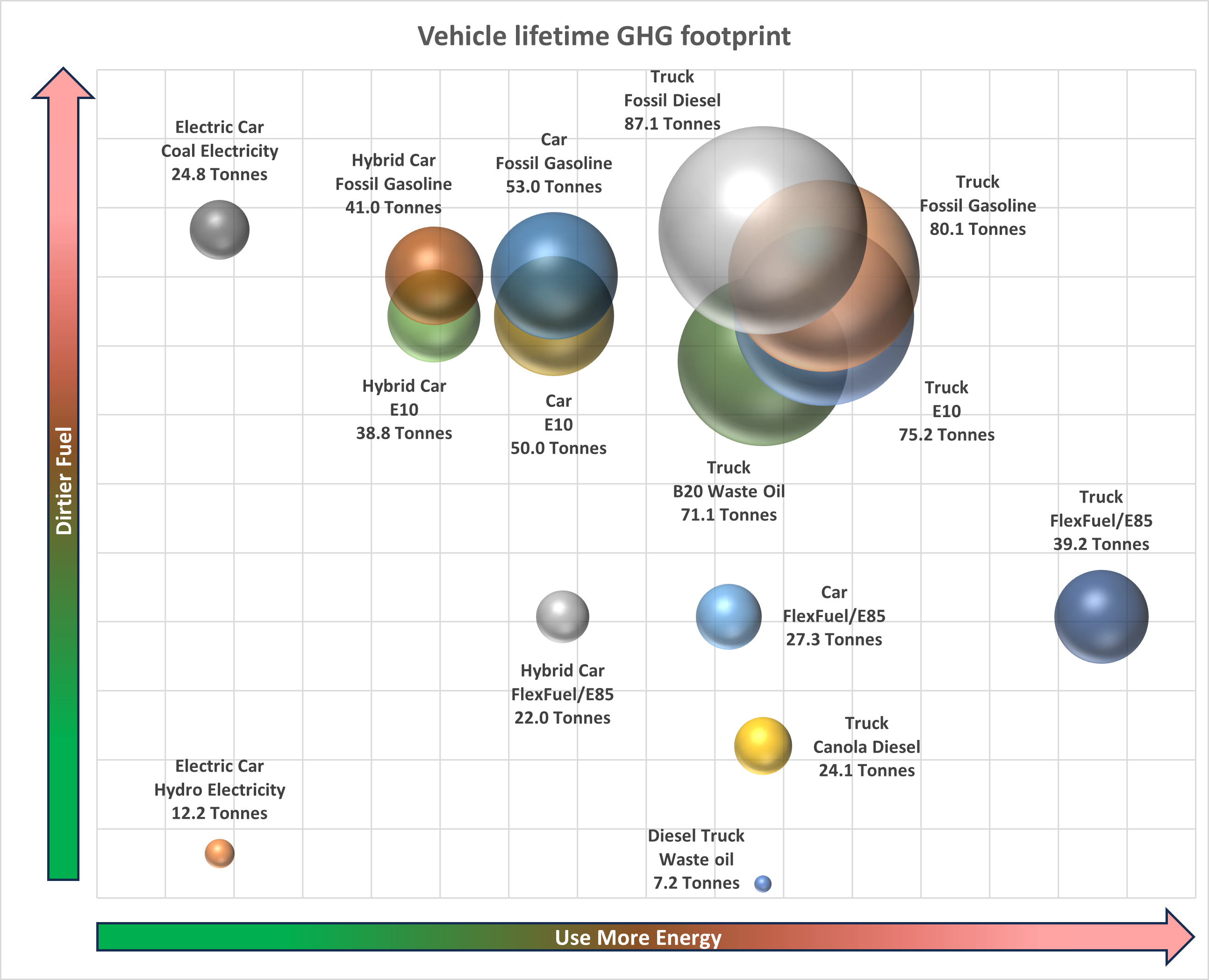
Electric vehicles or renewable fuels? Which should drive the world forward?
By Dr. Michael Rensing
As the world strives towards a more sustainable future, the transportation sector has become a critical area of focus in the fight against climate change.
Two solutions that are attracting significant attention are renewable fuels and electric vehicles (EVs). Both solutions have the potential to significantly reduce carbon emissions from the transportation sector, but which one is better suited for decarbonization in the short- and long-term?
A Quick Analysis of the Carbon Impact of Renewable Fuel and Electric Vehicles
If our goal is to reduce GHG emissions globally, we need to account for all the impacts of our choices. For vehicles, this is done by conducting lifecycle analyses for the energy source (fuel) and determining the lifetime emissions for all energy used during the useful life of the vehicle, as well as the emissions associated with the manufacture, maintenance, and disposal of the vehicle.
But where can the required data be found? Fortunately, we can learn (a.) the annual average vehicle fuel consumption for the ten best vehicles in each class of vehicles (cars, trucks and electric vehicles) from the Natural Resource Canada fuel economy website, (b.) typical fuel carbon intensities from the British Columbia Low Carbon Fuels website, and (c.) estimates for the total lifecycle fuel emissions for a typical fifteen years of vehicle life via the new Canadian Clean Fuels Regulations (CFR). Finally, the emissions for the manufacture, maintenance, and disposal of light-duty internal combustion vehicles and electric vehicles can be derived from a report by ICCT. Together, this data can be used to create a total carbon footprint, which has been charted on the following illustration, where each circle has an area proportional to the footprint of a given vehicle class, while the centre of the circle corresponds to the carbon footprint of the fuel and the amount of that fuel that is used.

Interestingly, a diesel truck consumes a significant amount of fuel, but if it uses very low-carbon-intensity renewable diesel, it has a footprint which is almost equal to the lifecycle of the vehicle itself. An electric vehicle in a jurisdiction with low-carbon electricity has a similar footprint, but it uses significantly less energy over its lifetime than a diesel truck.
Clearly, both renewable fuels and EVs have the potential to significantly reduce carbon emissions compared to fossil fuels.
Carbon Credits, Policy, and Regulations
So, how do we legislate—and equally importantly, fund—these alternative solutions? The Clean Fuels Regulations are a form of low-carbon fuel regulation. Compliance credits from biofuels depend on the carbon intensity of the fuels, and all biofuels must meet land use and biodiversity requirements to ensure that they are produced sustainably. The supply of low-carbon fuels will generate credits that will be used to offset the debits generated by high-carbon fuels. As the regulations become more stringent, the supply of low-carbon fuels will need to increase.
While EVs have the potential to significantly reduce carbon emissions in the long-term, they require a significant investment in a new charging infrastructure and improvements to the grid. The federal government has announced that they will implement Zero Emission Vehicle sales targets to ensure that increasing numbers of electric and hydrogen fuel cell vehicles are manufactured and sold instead of internal combustion engine vehicles.
The federal government has also announced their intention to implement a Clean Electricity Regulation to require significant reductions in the emissions from electricity generation.

Other Energy Sources for Transportation
While renewable diesel and electric vehicles are two of the most promising solutions for reducing carbon emissions in the transportation sector, there are other options to consider. For example, the use of biofuels made from waste or non-food crops, hydrogen fuel cell vehicles, and natural gas vehicles using renewable methane are all being explored as potential solutions.
Renewable diesel can be used in existing diesel engines and has the potential to make an immediate impact on reducing carbon emissions. However, the use of oils such as soy and canola as feedstocks has the potential to impact food prices and raises questions about the sustainability of renewable diesel as a single solution in the long-term. In order to avoid these issues, it will be necessary to decrease our use of liquid fuels and shift to a diversity of alternative energy sources.
Conclusion
There is often debate over which solution is better suited for decarbonizing the transportation sector, renewable fuels or electric vehicles, but it would be more realistic to recognize that there is more than one solution. In fact, it is likely that selecting only one solution to the exclusion of all others will lead to economic disruptions as well as unsustainable practices, both economic and environmental.
It is more likely that we will need to electrify transportation wherever possible in order to reduce reliance on liquid fuels to the point where they can be produced sustainably. Flexible regulations like the CFR allow for society to make the transformation as efficiently as possible. Policymakers should be focusing on “flexible regulations” such as low-carbon fuel standards that consider factors such as cost, investment in infrastructure, and sustainability. Ultimately, a combination of solutions will be needed to reach our goals, but only by establishing a direct and frank discussion among all key stakeholders can we create a fair and sustainable ecosystem.

